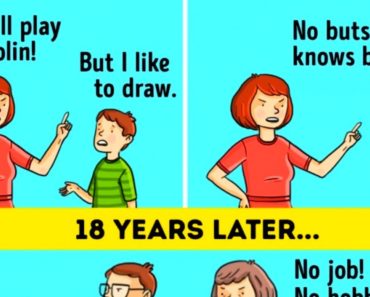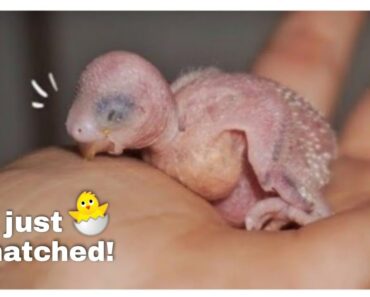Object permanence is the mental ability to understand that persons or objects exist even when not seen by the eyes, felt by the touch, and heard by their sound (1). Infants often do not understand object permanence. It is the reason why they become upset when an object or parent vanishes while playing games, such as peek-a-boo.
Object permanence is a cognitive milestone in infants and was first studied by Jean Piaget, a Swiss psychologist. In this post, we explain object permanence, the age at which babies achieve it, and games that you may try to exercise this ability.
How Do Babies Develop Object Permanence?
Object permanence in babies develops in stages with minor achievements at different ages. Jean Piaget proposed a theory of cognitive development in babies. According to this theory, infants develop object permanence at the end of the ‘sensorimotor stage,’ which lasts up to the age of 24 months or two years (2) (3).
The following are the sensorimotor stage’s six sub-stages, which ultimately lead to the development of object permanence.
- Birth to one month: It’s called the reflex schema stage. Babies begin to understand how the body moves and works. The vision is blurred during this stage, thus they are not well aware of the objects to understand its disappearance from their sight. Infants prefer looking at faces in this stage and develop visual tracking, closing hands, and suckling skills.
- One to four months: It’s called the primary circular reactions stage. Babies begin noticing and following the movements of objects. They start looking for an object in this stage, but only for a few seconds. During this course, they grow increasingly aware of their hands, arms, legs, and eyes. This stage includes developing a response to familiar faces, objects, such as their favorite toy, sounds, and events, such as opening their mouth during feedings.
- Four to eight months: This is called the secondary circular reactions stage. Babies start reaching out for objects that are partly hidden. If an object is completely hidden, the baby won’t attempt to reach out for it. The baby learns coordinating vision and apprehension. Actions are planned in this stage, but babies mostly repeat similar activities with the same object.
- Eight to twelve months: It is called the coordination of secondary circular reactions stage. Basic understanding of object permanence appears in this stage. The baby successfully retrieves an unseen object when repeatedly hidden at location A. But if the object is moved to location B, even while the baby is watching, the baby would continue searching for the object at location A. This error is called the classic A-not-B error.
- Twelve to eighteen months: It’s called the tertiary circular reactions stage. Babies are now able to retrieve an object hidden a number of times at different locations within their view. However, if the object is not found, the baby won’t make any attempts to search the object at other locations that were not within their field of view at the time of hiding.
- Eighteen to twenty-four months: This stage is called the invention of new means through mental combination. The baby completely acknowledges object permanence, retrieves an object totally hidden, and no more performs the A-not-B errors. The baby can also find objects when an unseen rearrangement is done.
Games To Support Object Permanence
Babies and toddlers usually develop object permanence irrespective of the external stimulus they receive. Nevertheless, parents can try playing games that can help reinforce the concept of object permanence. These games could also help exercise several other physical and cognitive skills of the baby.
- Peek-a-boo: It is an all-time favorite game of parents and caregivers. Infants love looking at faces and this game of disappearing and quickly reappearing face intrigues the baby. You can hide your face behind your hands, blankets, and towels. Call your baby’s name as you hide your face in front of them, and if they touch the covering, drop/remove the cover you were hiding behind and say “you found me” or “peek-a-boo.”
- Hide and seek: Babies recognize the voices of their caregivers. Use this voice recognition ability to help the baby realize your existence around them when you are out of sight. The baby may sometimes become upset during this game as they do not find you in their line of sight, but they can hear your voice. It may lead to separation anxiety, but gradually the baby will realize your presence based on your voice even when you are outside their field of view.
- Hide the toy: Choose the baby’s favorite toy, and slowly hide the toy under the blanket or towel while the baby watches. Make sure that a part of the toy peeks out. Encourage the baby to find the toy, and when they uncover it, exclaim, “here it is” or “see what you found.” Gradually make the game challenging by concealing toys entirely.
- Object permanence toy box: This is a simple wooden toy with a hole on the top and a tray on one side with a small ball. Drop the ball in the hole, and draw the baby’s attention to the ball when it rolls out into the tray. Repeat this a few times and then let the baby try. This toy helps develop object permanence, hand-eye coordination, and memory skills in babies.
Separation Anxiety And Object Permanence
Babies can display separation anxiety due to the lack of object permanence. If the baby sees a parent leave a room and close the door, they assume the parent is gone forever. The baby may become anxious and would only calm down when the parent reappears in the baby’s field of view.
Older babies, who have developed object permanence, could also display separation anxiety. In their case, they know that a parent who has left the house for work is gone for several hours (4). Separation anxiety may peak at the age of nine months and could continue to toddlerhood. According to Stanford Medicine, separation anxiety usually ends by the age of three years (5).
The achievement of object permanence lays the foundation for several other cognitive abilities, such as recalling the last seen location of an object. Infants develop object permanence gradually, and parents can assist them through relevant games and activities. Once your baby is through toddlerhood, they will become adept at object permanence and will seldom have issues, such as separation anxiety.

































